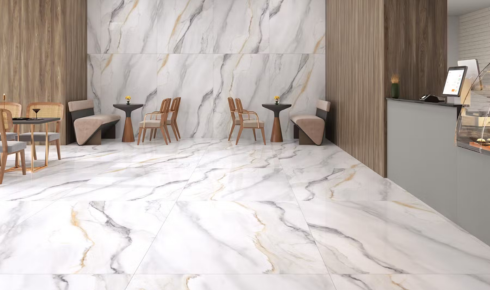In today’s fast-evolving construction industry, cladding has become an essential component that contributes both to the visual appeal and the structural integrity of buildings. From residential homes to large commercial complexes, cladding serves multiple purposes—providing protection from environmental elements, improving energy efficiency, and enhancing architectural design. As construction trends continue to shift towards sustainability and durability, the demand for advanced cladding solutions is on the rise.
What is Cladding?
Cladding is the process of applying one material over another to serve as a protective and decorative skin for buildings. It is usually fixed to the exterior of a structure, creating a layered barrier between the building’s core and the outside environment. The primary goal is to prevent water ingress and reduce the impact of harsh weather conditions while improving insulation and appearance.
Cladding does not have to provide structural support, but it can greatly improve the functionality and performance of a building. With proper installation, it becomes a shield that helps extend the life of the underlying materials and contributes to the building’s energy performance.
Types of Cladding Materials
Cladding is available in a wide variety of materials, each offering distinct advantages in terms of durability, appearance, and cost. Common types include:
- Timber Cladding: Offers a warm, natural finish. It is environmentally friendly but may require regular maintenance.
- Metal Cladding: Usually made from aluminum or steel, it is durable, fire-resistant, and ideal for modern design aesthetics.
- Brick Slip Cladding: Mimics the traditional look of bricks but is lighter and easier to install.
- Vinyl Cladding: A cost-effective and low-maintenance solution popular in residential buildings.
- Stone Cladding: Delivers a luxurious appearance and is highly durable, although it can be more expensive.
- Fiber Cement Cladding: Combines cement and cellulose fibers for a versatile, fire-resistant, and durable option.
Advantages of Cladding
Cladding offers numerous benefits that go beyond just good looks. Some of the key advantages include:
1. Weather Resistance
Cladding creates a barrier that protects buildings from rain, wind, snow, and harmful UV rays. This minimizes the risk of moisture seeping into the walls, which could lead to mold growth or structural damage over time.
2. Thermal Insulation
When installed with proper backing materials, cladding enhances a building’s insulation, keeping interiors cooler in summer and warmer in winter. This helps reduce energy bills and carbon emissions, making it an eco-conscious choice.
3. Aesthetic Versatility
With numerous colors, textures, and finishes available, cladding gives architects and designers the creative freedom to achieve any desired style—from rustic wood panels to sleek metal facades.
4. Fire Protection
Many modern cladding systems are designed to be fire-retardant or non-combustible, providing an added layer of safety, especially in high-rise or public buildings.
5. Low Maintenance
Certain cladding materials like metal or fiber cement are resistant to rot, pests, and wear, requiring minimal upkeep compared to traditional finishes like paint or plaster.
Environmental Considerations
Sustainability is a significant factor in today’s construction projects. Modern sustainable cladding solutions often incorporate recycled materials and are themselves recyclable at the end of their lifespan. Cladding also plays a key role in improving a building’s energy performance, helping it meet green building certifications and energy regulations.
Choosing the Right Cladding
The choice of cladding depends on several factors, including the building’s purpose, budget, climate, and desired aesthetic. While cost is often a deciding factor, it’s important to balance price with performance and longevity. Consult a professional contractor or architect to assess the most suitable cladding option for your specific project needs.
Final Thoughts
Cladding is far more than just a cosmetic addition to a building. It is a crucial feature that offers long-term protection, energy efficiency, and design flexibility. As technology advances and materials become more sustainable, cladding will continue to shape the future of construction. Whether you’re designing a new building or upgrading an existing one, investing in external wall cladding can significantly enhance its value, performance, and visual impact.





